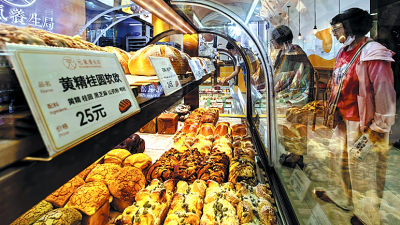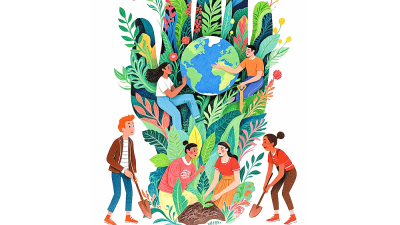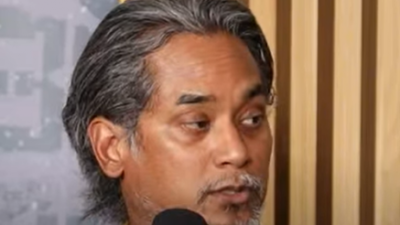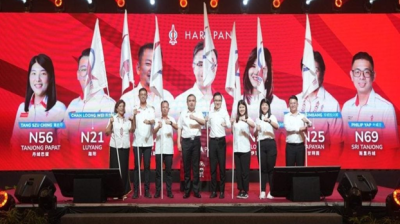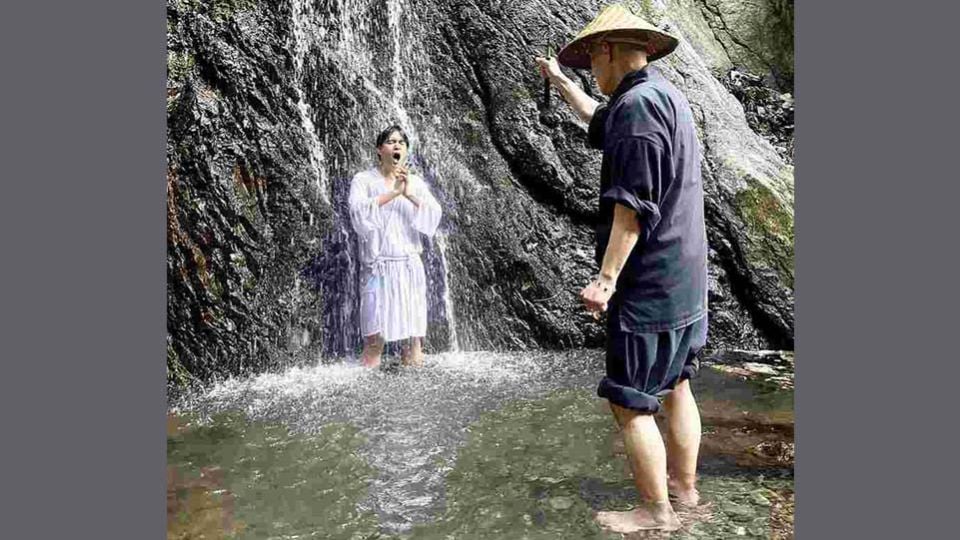
HINOHARA: As a 40-something journalist often adrift in worldly desires, I suddenly felt a powerful pull toward “waterfall meditation.” I yearned to be cleansed by the icy torrent. Oddly, I noticed more and more people on social media were sharing this same longing. What was behind this phenomenon? I decided to find out by taking on the waterfall myself.
Tenkoji temple, nestled in a valley in Hinohara, Tokyo, is a 150-minute journey by train and bus from central Tokyo.
On a brisk weekday morning in mid-February, as a cold snap enveloped the Kanto region, only three participants including me had gathered at 10:30 a.m. Yet the head priest, Takao Seiken, casually noted, “Some days, we get close to a hundred people for the waterfall meditation.”
We donned white robes over our clothes and spent about an hour learning the proper methods of gassho (joined palms) and bowing for about an hour from the guiding monk. The rituals felt deeply traditional, yet a modern sensibility unexpectedly surfaced with the instruction: “Filming is allowed; if you upload to social media, you receive a prayer stick.”
Next, we changed into only white training garments over our underwear and headed outside. After a 15-minute barefoot run on a paved road — a practice called “ohyakudo mairi” — we drove about five minutes to Kotengu Falls.
After disembarking, we hiked along a mountain path until we reached the waterfall. At about 7 meters high, it wasn’t a massive cascade, but its presence in the severe cold was striking, nonetheless. Hesitantly, we approached it one by one.
The guiding monk loudly recited “Namu Daishi Henjo Kongo,” a mantra signifying reverence for Kobo Daishi, with all participants joining in the chant.
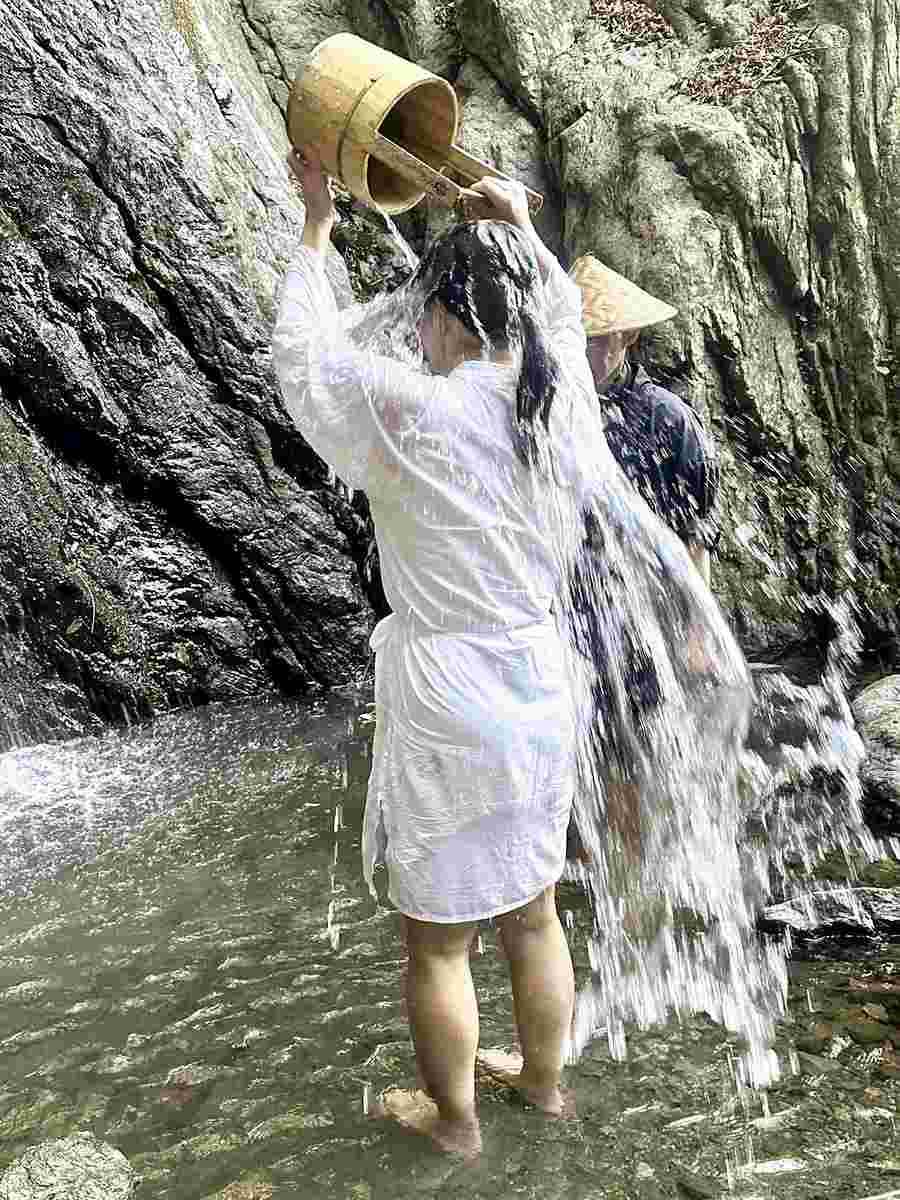
It was my turn. I bowed to the mountain god and the waterfall god. Then, I braced myself as I poured a bucket of water over my body. I positioned myself where the cascade barely touched my head, but the instructor urged me to go further back.
As I moved under the force of the water, the piercing cold was fleeting. After that, I entered a state of nonattachment. Though it felt like an eternity, the immersion lasted only about two minutes.
My mind and body felt awakened, filled with a sense of fulfillment. Other participants shared similar feelings, with comments like “I reached a state of no mind” and “I feel a great sense of accomplishment.”
On the bus ride back, the conversation flowed with a surprising energy. Of the eight participants that day, including those who joined in the afternoon, everyone except me was in their teens to 30s.
A second-year high school student from Chiba smiled brightly and said, “I wanted to eliminate unnecessary distractions from my studies.”
A man who works for an IT company in Tokyo also smiled brightly and said, “I wanted to reevaluate myself.”
Social media welcome
One thing that left a strong impression on me at Tenkoji temple was how participants filmed each other as they took on the waterfall. In recent years, the number of annual visitors to the temple has soared to about 20,000.
Takao attributes this increase to the waterfall meditation experience gaining widespread recognition through social media and video streaming.
He believes the pandemic, which led people having more solitary time, sparked self-reflection and a greater interest in outdoor activities. He suggested people are “likely trying to change their negative thinking by borrowing the majestic power of nature.”
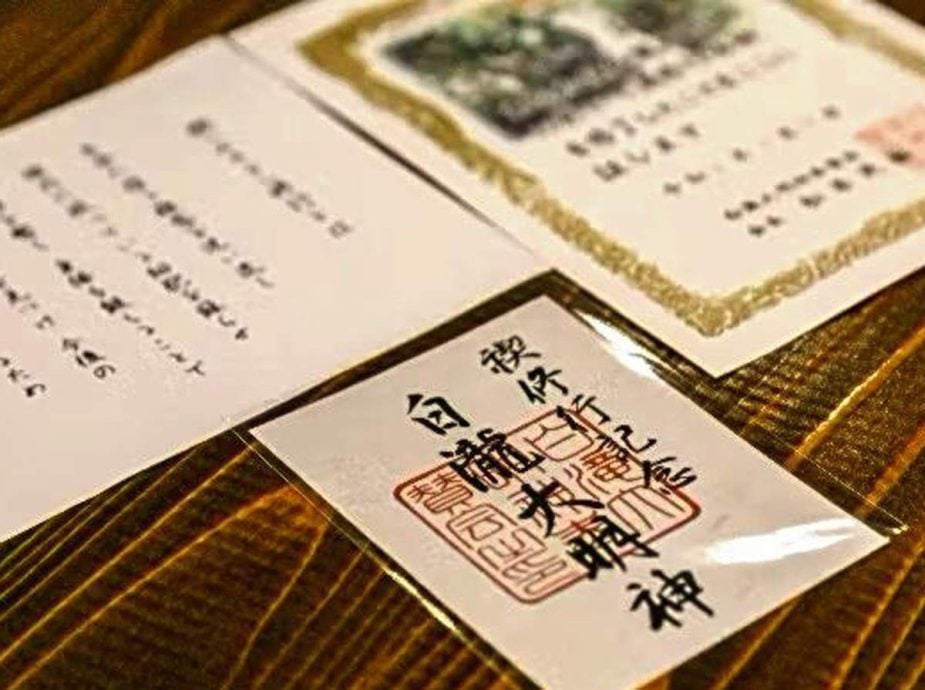
The trend of temples embracing social media appears to be expanding. Shirataki Daimyojin shrine in Toba, Mie Prefecture, now offers waterfall meditation alongside activities like traditional meditation and saunas, with participants eagerly posting about their experiences on social media.
In 2024 alone, about 6,000 individuals experienced the waterfall meditation, sources said. “The number of practitioners is increasing every year,” said Shigeki Matsumoto, who is a representative of the local support association. “Many foreigners are also visiting, perhaps because the appeal has truly spread through social media.”
Anticipating such inbound tourism, the Izumisano municipal government in Osaka Prefecture has begun offering tours for foreigners that include waterfall meditation. There is even a high-priced, one-night plan costing about ¥150,000, which also includes trekking and hot springs.
“Waterfall meditation is a part of Japanese culture. We believe it’s very appealing to people from overseas,” said a representative from the Izumisano City Promotion Partnership, who is responsible for tourism promotion.
The history of waterfall meditation dates back centuries. In Japanese nature worship, waterfalls were considered sacred, and it has been practiced as a form of ascetic training to discipline the mind and body through the flow of water.
“The act of placing oneself within the workings of nature aligns with Japanese spiritual culture,” said Prof. Hiroyuki Fukuhara at Ritsumeikan University, who conducts interviews with practitioners.
He also notes that the stimulation from the waterfall can regulate the autonomic nervous system, suggesting, “It is likely more sought after by modern people who want to release suppressed emotions from stress,” he said.
The words from Tenkoji temple’s head priest to “become one with the waterfall” left a lasting impression. Was I truly seeking unity with nature? I hope to continue my spiritual discipline.
Seeking self-reflection
The number of people engaging in self-reflection is on the rise. According to Asoview, a leisure booking site, the number of individuals who participated alone in ascetic training experiences, such as waterfall meditation, Zen meditation, sutra copying and Goma fire rituals, increased 1.8-fold in 2024 compared to the previous year.
The number of people who participated alone in pottery making, which involves being immersed in one’s own world, also increased from the previous year.
“After the pandemic, people have become less resistant to immersing themselves alone in their hobbies. This trend is likely to continue,” said a public relations representative for the company operating the site.
ADVERTISEMENT
ADVERTISEMENT









